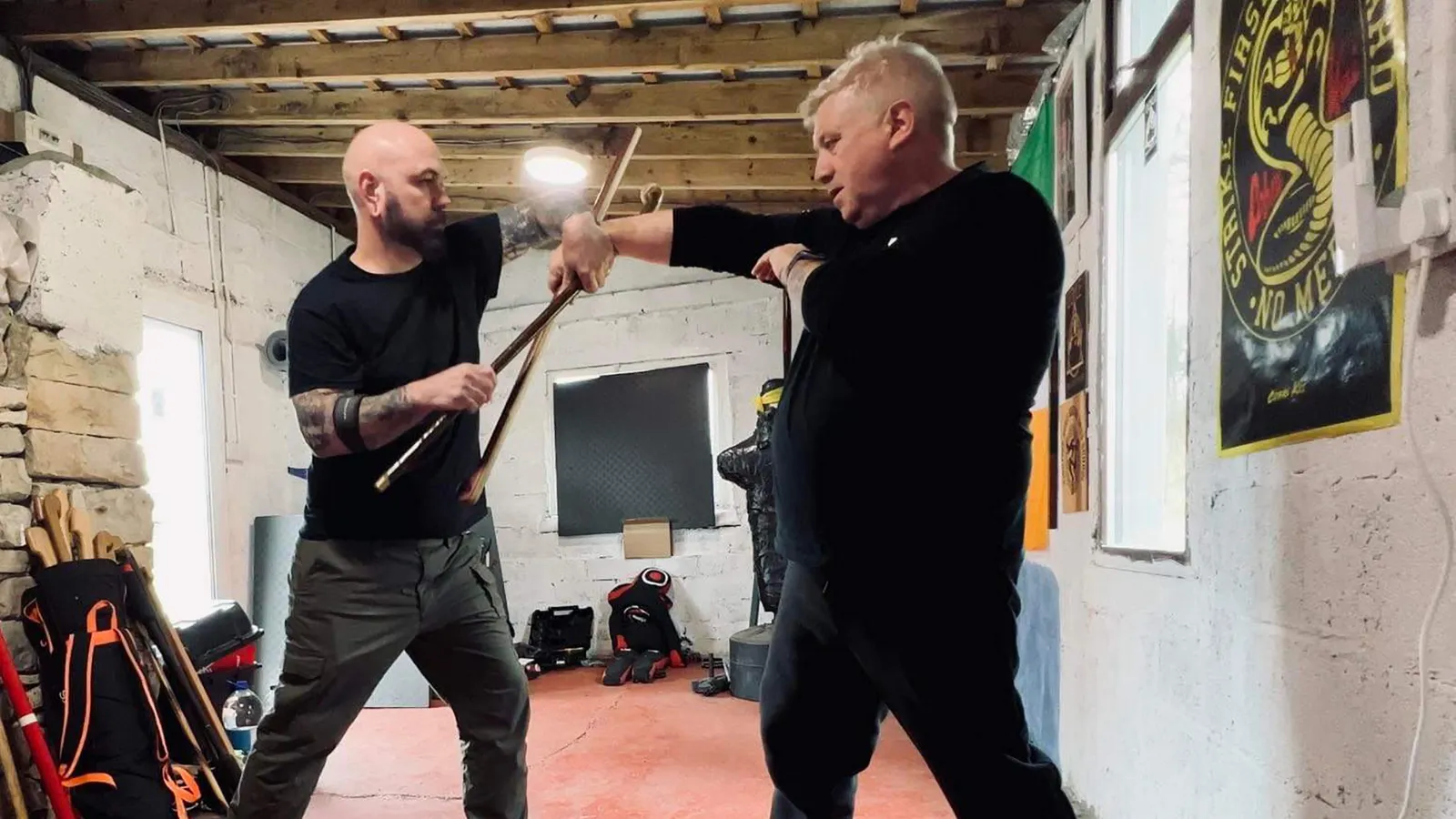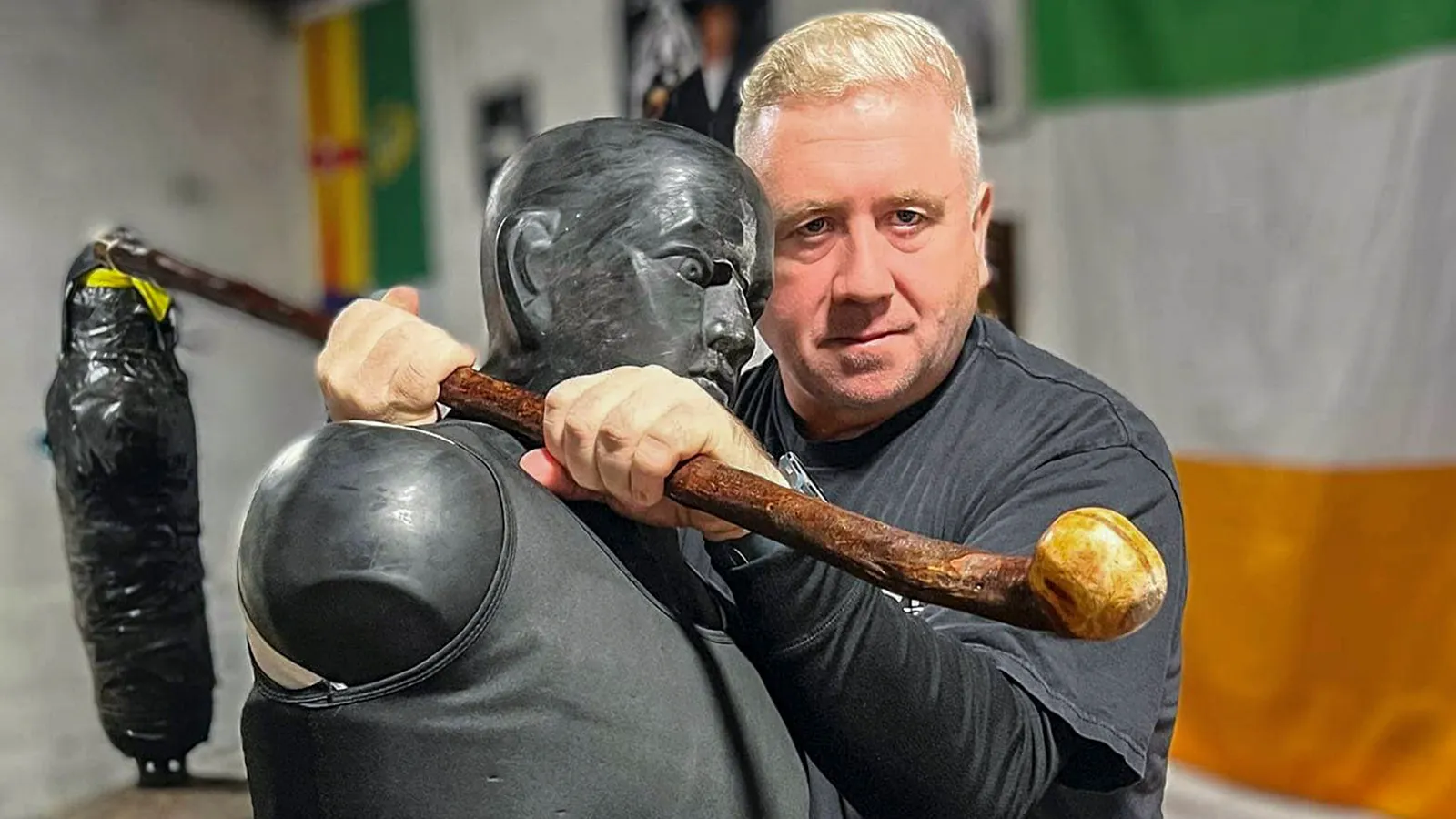Bataireacht: The ancient Irish martial art making a comeback

(Credit: Bernard Leddy)
By Ronan O'Connell
17th October 2022
It all but disappeared in the late 1800s, but Irish stick fighting – which was used to rebel against the occupying British – is being revived by fighters around the world.
I
In a gym in Ireland's County Leitrim, Bernard Leddy rocked back on his heels to measure up his target. Then his hips pivoted, his weight shifted forward, and he used a cudgel to deliver a thunderous blow to the jaw of a rubber sparring dummy. Leddy was wielding this wooden weapon in the manner of his Irish ancestors.
Similar strikes killed many men in the 18th and 19th Centuries. Back then, this long wooden stick with a bulbous head, called a shillelagh, was key to bataireacht, or Irish stick fighting. And this Irish martial art, which dates back more than 500 years, was once as central to national identity as kung fu in China, judo in Korea or Samurai jiu-jitsu in Japan.
From its 16th Century origins, bataireacht – which is a blend of fencing, boxing and grappling that sees fighters punch, jostle and strike with their sticks – boomed in the 1700s after the occupying British banned Irish people from carrying many types of weapons. Instead they protected themselves with supposed walking sticks, which were actually shillelagh. By the 1800s, bataireacht was so popular it was taught in Irish schools, before changing attitudes towards fighting and the impact of the Great Irish Famine all but erased it by the turn of the 20th Century. Now, thanks to Leddy and members of the huge and proud Irish diaspora, bataireacht is making a comeback.

Involved in martial arts for 40 years, Bernard Leddy found bataireacht a decade ago (Credit: Bernard Leddy)
Leddy has been involved in martial arts for 40 years and first came across bataireacht videos online around a decade ago. Investigating further, he discovered that one of the world's only remaining bataireacht instructors was Glen Doyle, a Canadian of Irish descent whose family members have been stick fighters for generations. Leddy travelled to Newfoundland to train under Doyle and has since become a coach himself and helped spread bataireacht across the globe.
The Irishman has moulded many new instructors and supervised the creation of about 50 bataireacht schools and study groups in Ireland, the UK, US, Taiwan, Pakistan, Mexico, Egypt and the Czech Republic. "I'm delighted at the growth of bataireacht, but I'm not surprised," Leddy said. "Because once people realise how effective bataireacht is, they immediately want to know more. In 20 years, I want it to be in every hall in Ireland, if not the world."
Tourists to the Emerald Isle have long been interested in learning traditional Irish skills. At facilities throughout the country, travellers are taught to Irish dance, beat the Bodhran drum, blend Irish whiskey or play the tin whistle.
Now, travellers can enter the dynamic world of Irish stick fighting. They can admire ancient shillelagh at Dublin's National Museum of Ireland, visit the sites of Irish stick fighting brawls, or attend a bataireacht class at Leddy's Fighting Hares schools in Manorhamilton and Belcoo.
While bataireacht is a relatively safe activity when practised in gyms under the supervision of experts, in the 1700s and 1800s it was wild and deadly. Back then, this martial art was central to a lethal form of mayhem called faction fighting, said John W Hurley, author of the book Shillelagh: The Irish Fighting Stick.
These massive organised brawls between rival factions bound by blood, parish or geography could involve hundreds, even thousands of Irish men. During these illegal melees, held at festivals and funerals, men hurled rocks, fired guns and swung shillelagh. "The spirit of 'Shillelagh Law' was to always be willing to go out and fight, and die if necessary, to maintain your personal or family or faction reputation," Hurley said.
Ironically, this blood-soaked bedlam often was recreational, according to Carolyn Conley, professor emerita of history at the University of Alabama and an expert on Ireland's crime in the 1800s, with arranged melees filling a void in entertainment options in rural Ireland. In fact, between 1866 and 1892, more than 40% of murders in Ireland were linked to recreational brawls. "My research indicates [arranged violence] was not only common but often viewed with approval by judges and landowners, some of whom participated," she said.
One County Kerry brawl in 1834 saw 35 people killed. A plaque marks that site in the serene seaside town of Ballyheigue, which, thanks to its pristine, 2km-long beach, is now a popular stop on the Wild Atlantic Way, a 2,600km driving route along Ireland's west coast.






 Reply With Quote
Reply With Quote